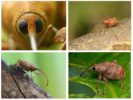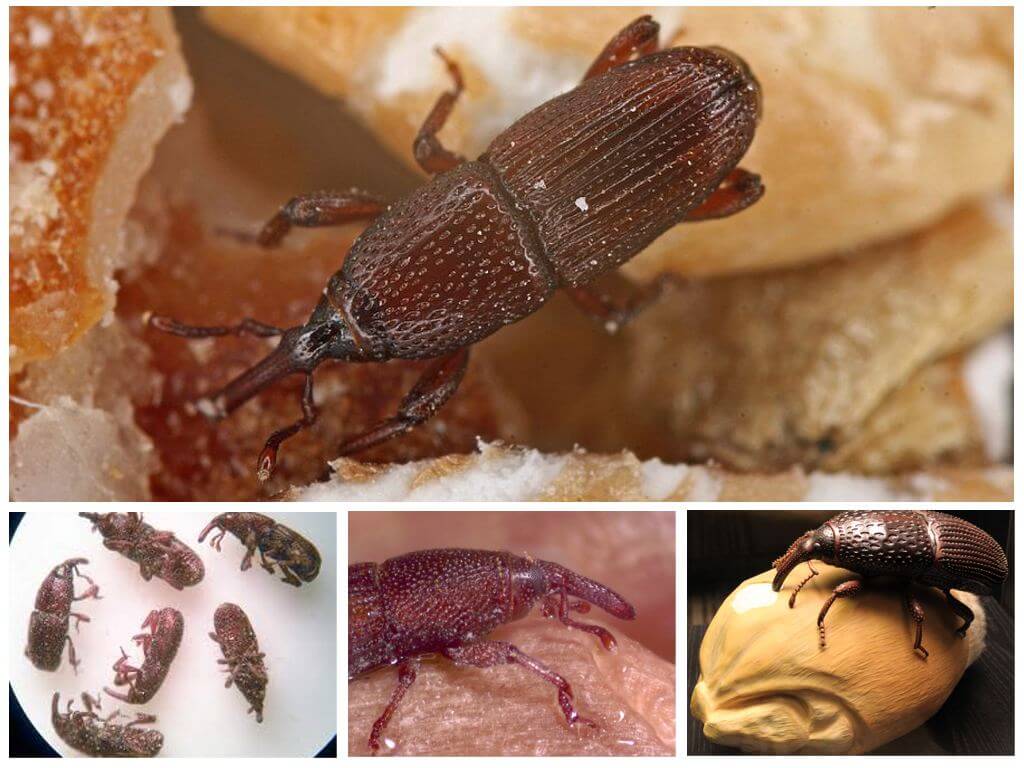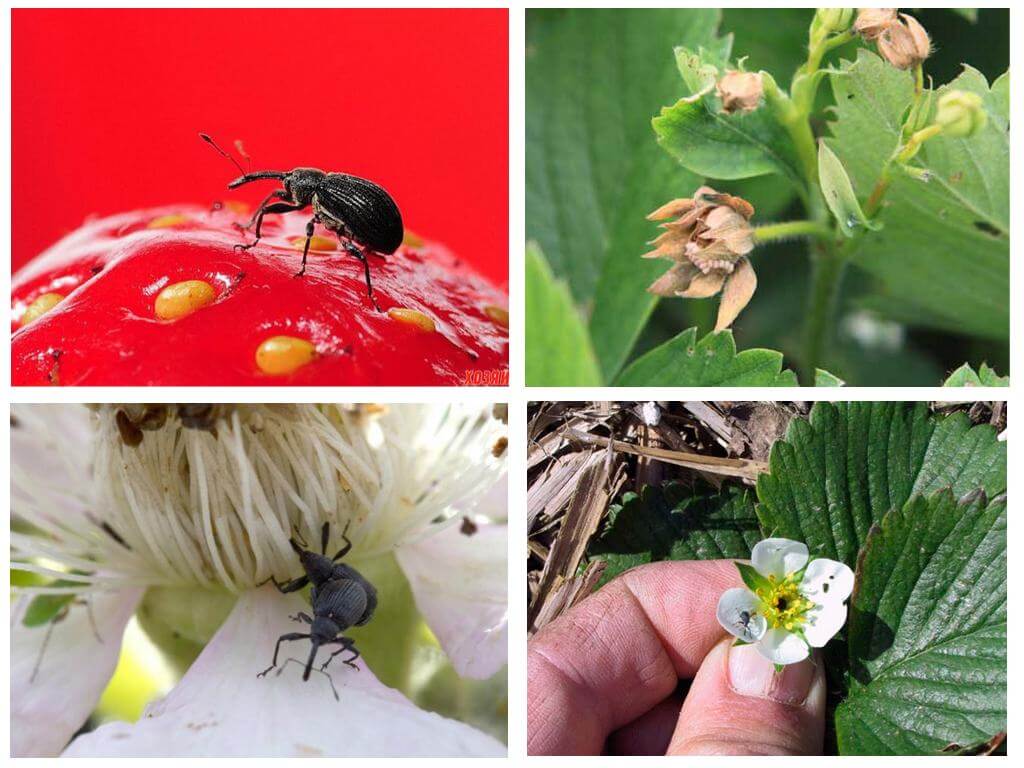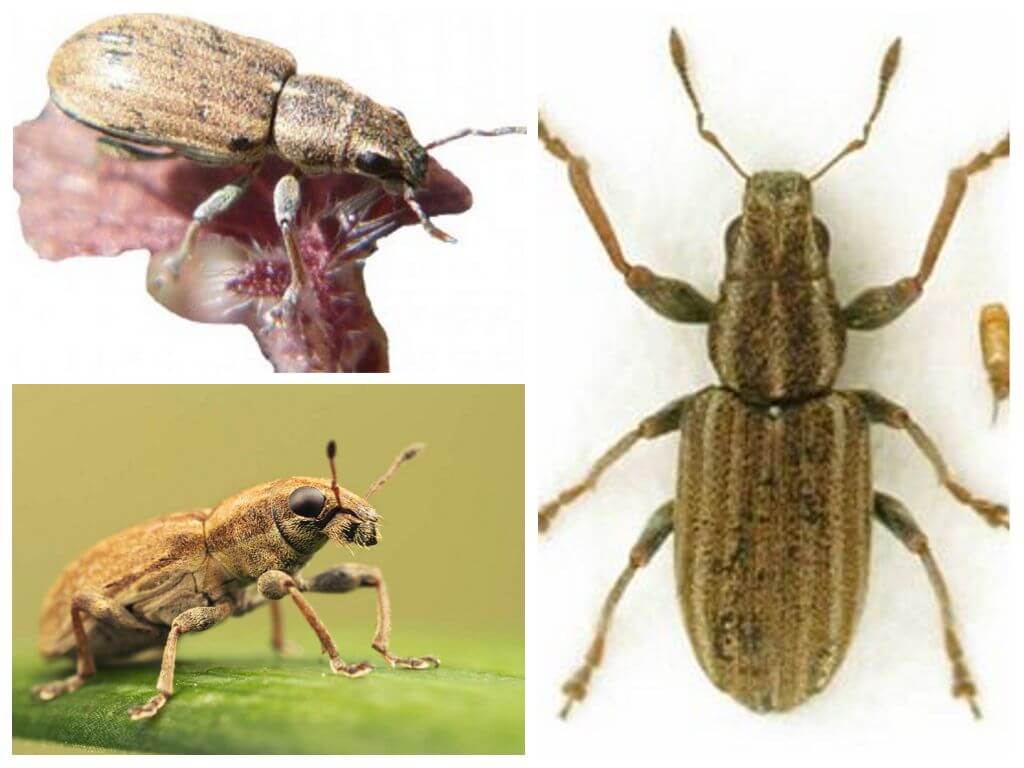- Acorn weevil
- Acorn weevil
Acorn weevil - A representative of the largest family of beetles, in which there are about 50,000 species. In everyday life, an insect is called an elephant acorns, an oak moth or an oak weevil. All names reflect the close connection of the beetle with the fruits of oak trees, which are a source of food for it, a place for laying eggs and a cozy nest for the development of larvae.
Biological features of the gastric weevil
Acorn weevils live in the Caucasus, Crimea, Siberia, in the European part of Russia in the forest belts in which oaks grow. The size of the body of the beetle varies between 5-8 mm. The back is diamond-shaped brown with dark spots. The main feature of the beetle is clearly visible in the photo - its long mouth apparatus, because of which it got its name.
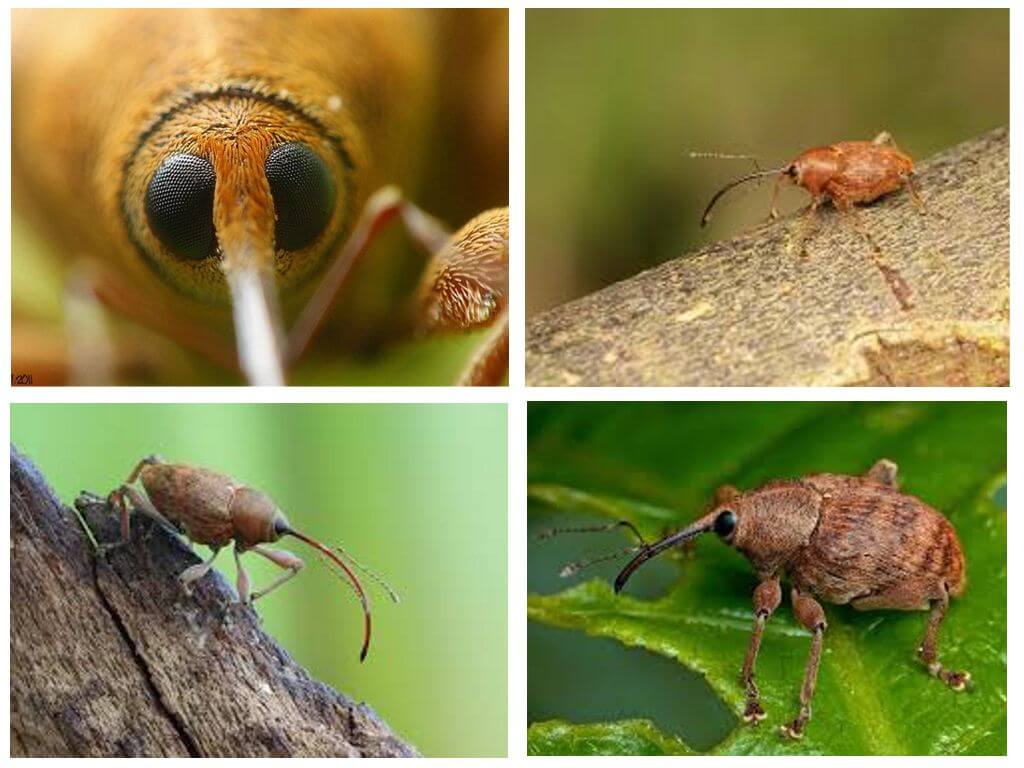
Interesting!
The weevil weevil is the owner of the longest proboscis. The length of the oral apparatus is almost twice the size of the insect itself and can reach 15 mm. At the end of the proboscis are teeth that help weevil drill oak fruits. Such an impressive rostrum gives the insect a lot of inconvenience during movement and it has to keep the proboscis upright.
Beetles hibernate under fallen leaves in the upper soil layer. With the onset of heat, they leave their shelters and come to the surface. Until mid-summer, they feed on young foliage, flowers, shoots of oak, maple, linden, and birch. From mid-July, weevils flock to oak trees. The fruit ovaries contain many nutrients and are a convenient capsule for laying eggs.
In order to get the contents of the acorn, the weevil makes a lot of physical effort. Drilling a single hole takes from 5 to 8 hours. The drilling process is very laborious, painstaking and requires precision movements. Having determined the penetration point, the bug first pierces it with its bizarre oral apparatus, then it describes a semicircle and returns to its original position. The length of the trunk does not allow the weevil to rest against the acorn and it has to drill a hole, standing on its hind legs and holding the rostrum in an upright position.
Interesting!
The slightest mistake leads to the fact that the oak weevil hangs in the air and dies. In the early cold autumn, such an absurd death overtakes a huge number of insects. For the most part, these are females, since it is they who perform drilling work with the aim of laying eggs.
How do weevil acorns multiply

Females differ from males in larger sizes and proboscis length. After mating, the female lays eggs under the acorn sheath, having previously drilled a hole in it. The number of eggs in one fruit depends on the yield. In a lean year, there can be up to 20 eggs in one stomach, under favorable conditions, their number does not exceed 8. One female can lay up to 150 embryos.
After 10-15 days, a white larva with a brown head appears from the egg. The shell of the acorn reliably protects it from the external environment, and the cotyledons allow you to eat well. The larval maturation period is from 20 to 30 days. At the end of this period, she independently gnaws a hole in the stomach and leaves it.In winter, young larvae burrow into the soil, where they build a kind of cradle and pupate.
The harm of gastric weevils
The acorn weevil in the photo is the cutest creature. However, these tiny insects with a bright appearance can destroy from 50% to 80% of the acorns. The larvae cause the greatest harm, the fruits damaged by them fall prematurely. Distinguished spoiled acorns can be distinguished by their wrinkled appearance, the presence of brown spots on the shell and the presence of excrement of larvae inside. Weevils are capable of causing similar hazards to hazelnuts.
